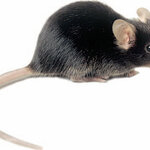I feel like I found this article with near-perfect timing, considering that I am starting a unit on genetics in my Biology classes. To recap: sadly, after scientists seemed to have successfully created a hybrid clone of an extinct goat (they had preserved cells from the last surviving animal who died 9 years ago), the only kid that survived to birth died shortly thereafter.
I think that one of the valuable lessons here is found in the numbers:
439 embryos were created. 57 were implanted into surrogate mothers. 1 survived to term. 0 newborn clones lived longer than 10…
Genetics & Molecular Biology

Steve over as Quintessence of Dust has prepared an excellent edition of Mendel's Garden. Read about how to know when you're being overcharged for personalized genetic testing, how to tell whether your child will have red hair, how two white parents can have a black child, and what makes a pink iguana, and much more.

An international team of researchers has uncovered the first gene linked to the most common type of epilepsy, called Rolandic epilepsy. One out of every five children with epilepsy is diagnosed with this form, which is associated with seizures starting in one part of the brain.
The finding is the first step in unlocking the causes of common childhood epilepsies and developing more effective treatments. Children with Rolandic and other types of epilepsies are usually treated with drugs that prevent seizures by suppressing electrical activity in the entire brain.
In the study, the…

Via Pharyngula, some non-scientist MD thinks that ~21,000 protein-coding genes aren't nearly enough to make a human (which of course then means that evolution is wrong):
4) The Human Genome Project showed that only 1-2% of Human DNA codes for proteins, or about 25,000 genes. These are not enough to account for the complexity of the organism. What is the other 98% of the genome's function? We don't know.
(BTW, the count of human genes has gone down since the genome sequence was first released; the latest number I hear from my gene-finding colleagues is about 21,000.)
PZ points out the…

Can't help being the life of the party? Us either.
Maybe we were just born that way.
Researchers from Harvard University and the University of California, San Diego have found that our place in a social network is influenced in part by our genes, according to new findings published in the Proceedings of the National Academy of Sciences. This is the first study to examine the inherited characteristics of social networks and to establish a genetic role in the formation and configuration of these networks.
While it might be expected that genes affect personality, these…

Genes that contain instructions for making proteins make up less than 2% of the human genome. Yet, for unknown reasons, most of our genome is transcribed into RNA.
Investigating all transcripts produced in a yeast cell, researchers in the groups of Lars Steinmetz at the European Molecular Biology Laboratory (EMBL) in Heidelberg, Germany, and Wolfgang Huber at the European Bioinformatics Institute (EMBL-EBI) in Hinxton, UK found that most regions of the yeast genome produce several transcripts starting at the same promoter. These transcripts are interleaved and overlapping on the DNA.…

Ever since the time of Mendel, students and the general public have struggled with how to understand the interconnection of mathematics and genetics. Not because understanding Mendelian mathematics is a difficult subject, but rather because the application of mathematics has never been the strong suit for most people.
Reginald Punnett recognized this struggle when in 1909 he introduced the Punnett square - the cornerstone of genetics education in almost every classroom. In fact, for almost 100 years now, while the science of genetics has evolved by leaps and bounds, little has changed in the…

A research team in Portugal and the US has found for the first time nicotine receptors in the taste buds. In fact, although most of the toxicity of smoking is linked to other components, it is nicotine that leads to smoking addiction and until now it was believed that this substance had to migrate into the brain to bind its specific receptors and provoke its effects. But this new discovery, about to be published in the Proceedings of the National Academy of Sciences (PNAS), reveals a second recognition pathway most probably contributing for addiction and suggesting a possible new target for…

Daniel at Genetic Future has posted the latest edition of Gene Genie. Go read about blog reactions to Steven Pinker's genome, a DNA database for Portuguese criminals, predictions on what super-power-conferring mutations George Church might find in the genomes of his first 10 volunteers for the Personal Genome Project, how DNA can tell us where medieval scholars got their cows to make cow-hide manuscripts, and much, much more.
It's a great edition of Gene Genie, so go pay Daniel a visit.

Scientists who study how human chemistry can permanently turn off genes have typically focused on small islands of DNA believed to contain most of the chemical alterations involved in those switches. But after an epic tour of so-called DNA methylation sites across the human genome in normal and cancer cells, Johns Hopkins scientists have found that the vast majority of the sites aren’t grouped in those islands at all, but on nearby regions that they’ve named “shores.”
Methylation is one of several so-called epigenetic modifications that affect which genes are expressed without changing…